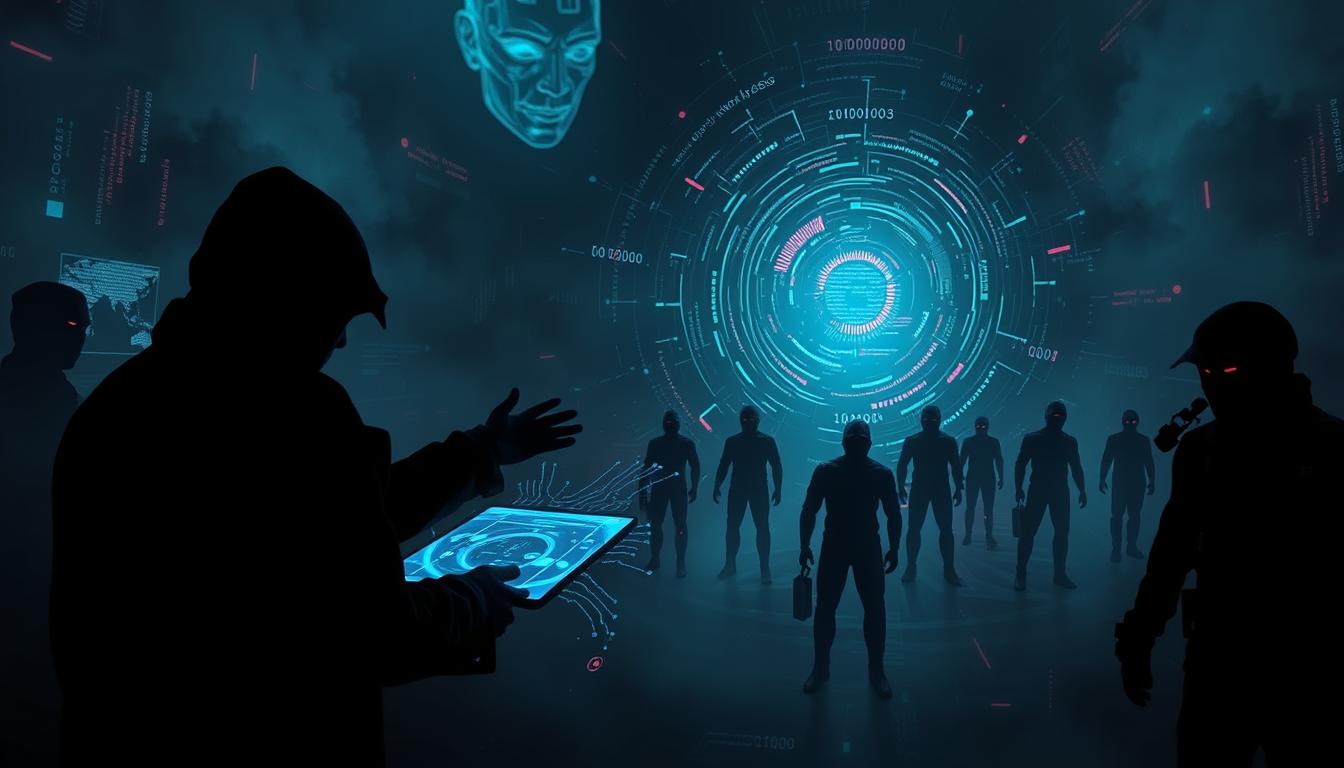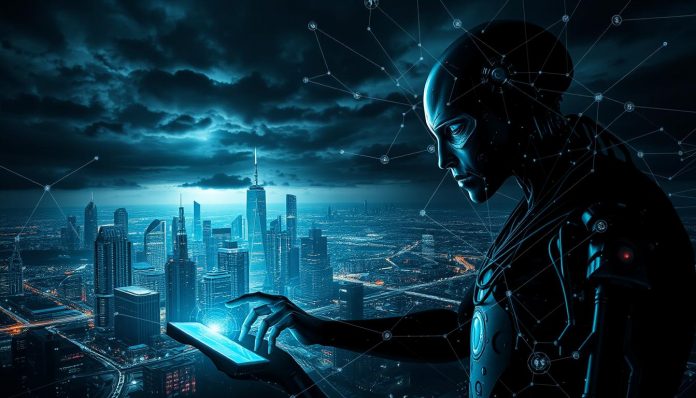The ever-growing complexity of intelligent threats is an issue that is becoming a major concern to both business and individuals. Together with the development of technology, the ways in which the cyber attack can occur is evolving, and so are the actors who engage in the criminal activities.
Artificial intelligence in cyber security has made them harder to detect and counter them. This brings serious questions on the quality of the current Cyber Security solutions.
The future of these threats in our digital age remains unclear, but it is imperative to know more about them and develop solutions to fight them off.
Key Takeaways:
- The emergence of threats that use AI is a major issue of concern among businesses and individuals.
- Artificial intelligence is being used in cyber attacks that are becoming more sophisticated.
- The existing Cyber Security solutions are not necessarily effective in combating AI-based threats.
- It is important to know what the new threats could entail so that we can improve our defense.
- To avoid falling behind the AI-driven threats, one has to be proactive and well-informed.
The Development of AI in Hacking:
The integration of AI in cybers attacks has transformed the security paradigm and threats have become more advanced and hard to be detected. Consequently, the analysis of this evolution is essential in order to devise efficient defense measures.
Traditional Attacks to AI-Threats:
The conventional attacks of cyber consisted of manual procedures, which restricted the size and the complexity of the attack. Attackers have gained the ability to automate their operations, process large volumes of information, and modify their strategies as things progress, and their attacks have become more powerful with the development of AI.
Getting Attackers to Use Machine Learning:
Attackers employ machine learning to improve their abilities, including revealing vulnerabilities, creating persuasive phishing letters and anticipating security effort. This allows them to get ahead of defenders and capitalize on the weaknesses better.
| Attack Type | Traditional Method | AI-Powered Method |
| Phishing | Generic emails sent to a large audience | Personalized emails crafted using machine learning |
| Vulnerability Exploitation | Manual identification of vulnerabilities | Automated scanning and exploitation using AI |
The Cyber Security threats of AI today.
The emergence of AI has turned the concept of cyber threat into a threat that is more difficult to counter. The current world has seen organizations deal with numerous AI-enhanced cyber security threats which are not only advanced but also efficient. These threats use AI and machine learning to perform sophisticated attacks that are likely to bypass traditional security controls.
Phishing and Social engineering powered by AI:
The phishing and social engineering strategies using AI have been more realistic and personalized. Machine learning algorithms allow the attacker to create customized email messages or messages that will be more successful at deceiving the target. This personalisation leaves the victims with no idea of what is legitimate and what is malicious communication.
Automated Exploitation of Vulnerabilities:
Software and systems can now be scanned to be exploited automatically by AI driven tools. This automation has played a great role to hasten the process of the attack, and the defenders have a small chance in response. These sophisticated threats are characterized by fast vulnerability exploitation.
Hacking Security Systems:
Adversarial attacks entail designing or coming up with inputs to the AI-driven security systems in a manner that makes them misinterpret or misclassify the data. This may cause security violations because the attackers may take advantage of the vulnerabilities in the AI models. These adversarial attacks are important to understand and respond to as a means of ensuring strong security postures.
How to defend yourself against AI creep:
Cyber defenses: Since the development of AI-driven cyber threats is constantly changing, it is important to re-evaluate our approach to cyber defenses. Companies have to be multi-faceted in their efforts to counter these advanced threats.

Artificial Intelligence-Based Security Systems:
One of the measures to improve cyber defense is the implementation of AI-driven security mechanisms. Such solutions are able to process large volumes of data and detect trends and identify unusual patterns to take immediate action in case of threats. Traditional security tools are not as predictive and preventative of attacks as AI-based security tools.
The Co-existence of Human and AI in Security:
Human-AI system collaboration will play an important role in security operations. Although AI is able to handle extensive data, human supervision is required in order to understand outcomes and take strategic decisions. Human-AI collaboration is effective and results in better overall security posture given the capabilities of both.

Training and Awareness Programs:
They should be trained and create awareness programs to make sure that the personnel are able to detect and respond to the threats posed by AI. Such programs inform personnel about the most recent threat vectors and the need to take cyber hygiene seriously. Frequent training aids in the creation of a security culture in a given organization.
Considerations of Regulatory and Policy:
Another consideration that organizations should incorporate in enhancing their cyber defense is regulatory and policy implications. Risks related to AI-driven threats can be addressed with the help of compliance with the applicable regulations and the formulation of internal policies. To ensure the effectiveness of cyber defense, it is important to be updated on the changing regulations.
Summary: Cyber Security in the AI-Driven World:
With AI changing the cyber threat environment, it is evident that conventional security solutions will not do. The advancement of AI in cyber attacks has increased the level of stakes hence the imperative to change the Cyber Security strategies by organizations.
The future of Cyber Security is the acceptance of AI-based security solutions, the human-AI collaboration, and the introduction of effective training and awareness strategies. In such a way, we will be able to keep in advance of the threats and safeguard our digital assets.
Cyber Security in this new age will demand constant innovation and attention. The more complex AI-driven threats are, the more important it is to be proactive and knowledgeable. Through cooperation, a safer digital landscape will emerge and the risks of AI-governed cyber threats will be reduced.
FAQ:
What are cyber threats that are AI-driven?
AI-based cyber threats are those cyber attacks that deploy artificial intelligence and machine learning to improve on their functionality, thereby becoming more advanced and difficult to detect.
What is the difference between the AI-powered phishing and social engineering and the traditional phishing?
Phishing and social engineering AI-powered apply machine learning algorithms to customize and optimize the phishing attempts and make them more believable and more likely to succeed.
What is automatic exploitation of vulnerabilities?
Automated vulnerability exploitation is the process of locating and exploiting software and system vulnerabilities with the help of AI, and attackers can use it to obtain unauthorized access to or disrupt the work.
What can be done to protect against AI-driven cyber threats?
To counteract AI-driven cyber threats organizations can deploy AI-driven security solutions, promote human-AI collaboration in security, carry out trainings and awareness campaigns, and remain aware of regulatory and policy implications.
How does human-AI collaboration contribute to cyber security?
The human-AI collaboration in cyber security is a project related to the collaboration of AI systems with humans to improve the security system, as humans provide the context and judgment, whereas AI systems perform the analysis of data and detect the pattern.
What is the significance of training and awareness in the protection against AI-driven cyber-threats?
Training and awareness programs are important because they inform employees about the current AI-based cyber threats and most effective practices in terms of security, minimizing the chances of successful attacks.
What are attacks on security systems on adversarial attacks?
Adversarial attacks on security systems consist of trying to operate AI-controlled security systems to escape detection, whereby inputs to the security systems are be crafted in a specific way to fool the AI.
What role can regulatory and policy considerations play to enhance cyber defense?
The regulatory and policy considerations can assist in creating standards and rules of the cyber security practices and that the organizations can prioritize on cyber security and best practices are followed.


